How Do I Minimize Falls During Standing Seam Panel Installations?
Posted by Howie Scarboro - CEO Fall Protection Distributors, LLC on Jan 31st 2024
Standing seam metal roofs may appear daunting, but with the right equipment, your crew can navigate them with confidence and conquer their installation. Consider these essential tools of the trade as their protective arsenal:
The Lifeline of Protection: Personal Fall Arrest Systems (PFAS)
PFAS systems are the crucial safety net that catches workers before a fall occurs. Imagine them as intricate lifelines woven with the threads of harnesses, lanyards, and anchorages. Choosing the right system depends on various factors, including:
Roof pitch and complexity:
Steeper roofs or those with multiple levels or skylights necessitate different systems than simple, flat ones.
Number of workers:
Ensure you have enough systems for all crew members and consider systems that allow multiple workers to connect to a single lifeline for efficiency.
Specific tasks:
Tasks like cutting panels or carrying heavy materials might require specialized lanyards with greater mobility.
Invest in OSHA-compliant PFAS systems from reputable manufacturers. Skimp here, and you risk compromising the very system designed to protect your workers. Don't forget thorough training! Workers must understand how to wear, inspect, and use their PFAS systems correctly. Practice makes perfect, so conduct regular drills to ensure everyone is comfortable and confident in their gear.
Anchoring Your Safety: Choosing the Right System
Selecting the right fall arrest system anchorage is paramount. These anchors are the points where lanyards connect, providing a secure hold in case of a fall. For standing seam roofs, several options exist, each with its own advantages:
Standing seam roof clamps:
These innovative clamps attach directly to the seams of the metal roof, offering mobility without penetrating the surface. They're ideal for simple, straightforward installations.
One of the industry's most popular product for this is the Standing Seam Roof Anchor SSRA1. It is the only system that not only allows for a single person tieoff, but has adapter plates to mount walkboards and horizontal lifelines to standing seam roofs.
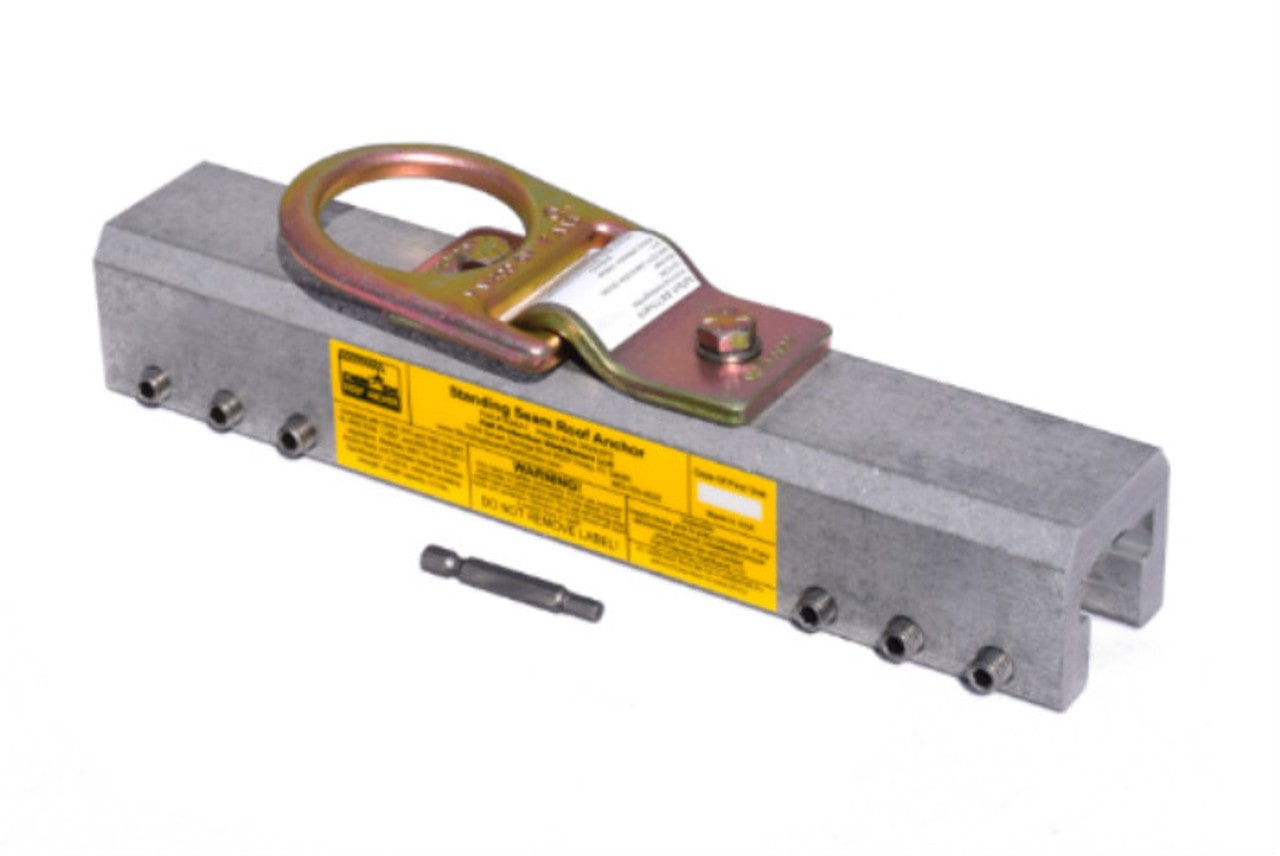
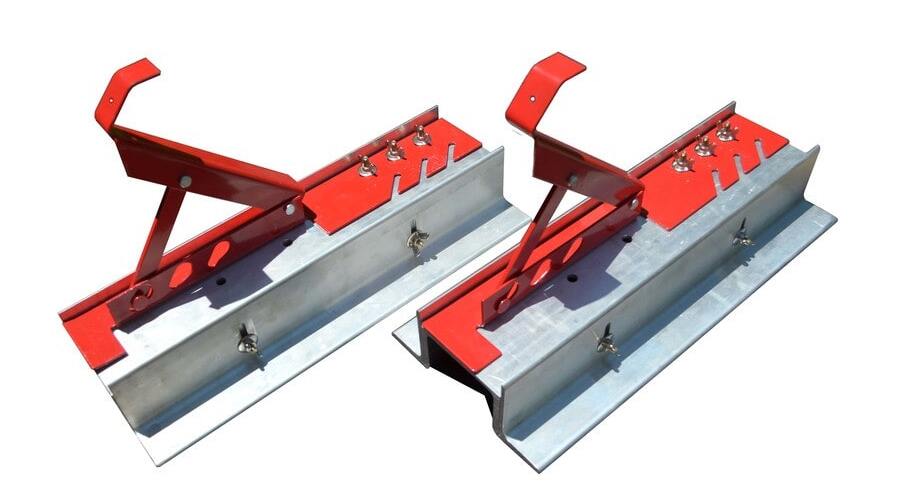
Lifelines and anchorages:
For more complex roof structures or situations where workers need continuous protection while moving around, lifelines and anchorages offer a permanent solution. These systems involve cables or ropes strung across the roof with fixed anchor points for lanyards to connect to.
The SSRA HLL kit allows for horizontal lifelines to be attached to standing seam roof systems with a zero penetrations required.
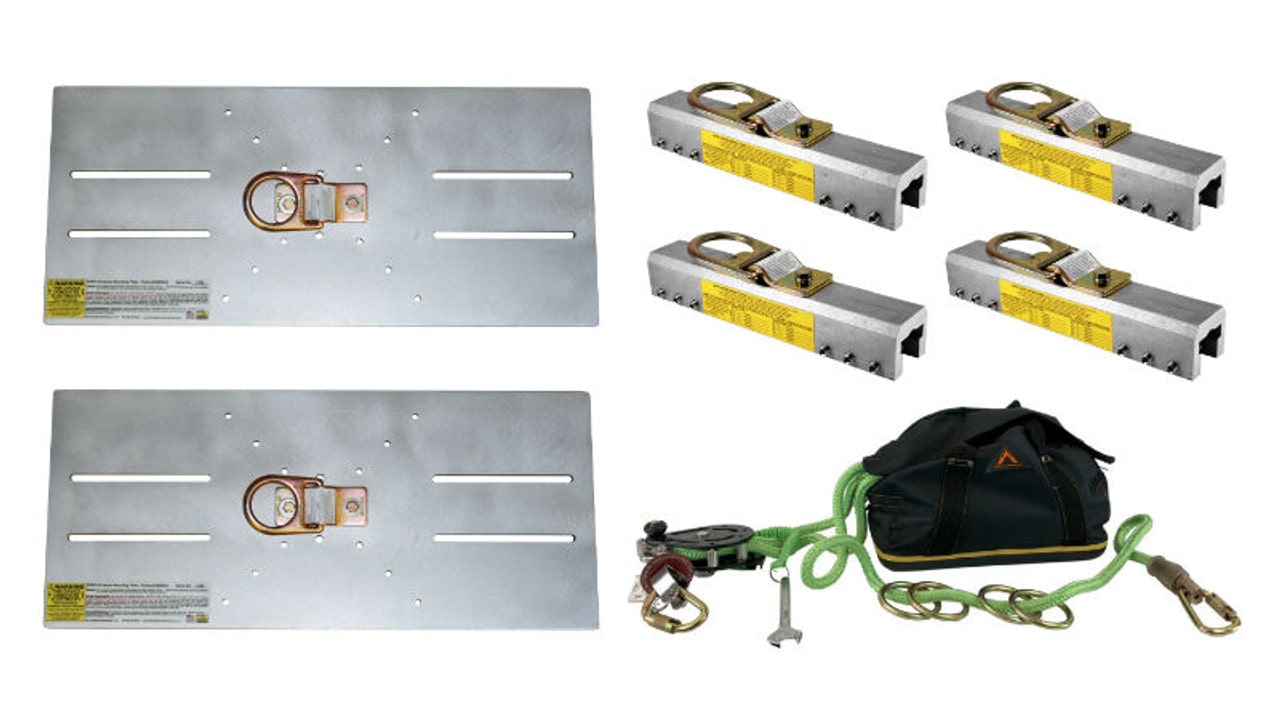
Guardrails:
While not considered a fall arrest system per se, guardrails provide excellent perimeter protection, especially around roof edges and openings. Combine them with other fall protection measures for comprehensive safety.
Remember, consult a qualified safety professional to assess your specific needs and recommend the most suitable anchorage system for your project. They can help you navigate regulations, ensure compliance, and choose the system that maximizes worker safety and efficiency.
Before You Take Flight: Pre-installation Precautions for a Smooth Landing
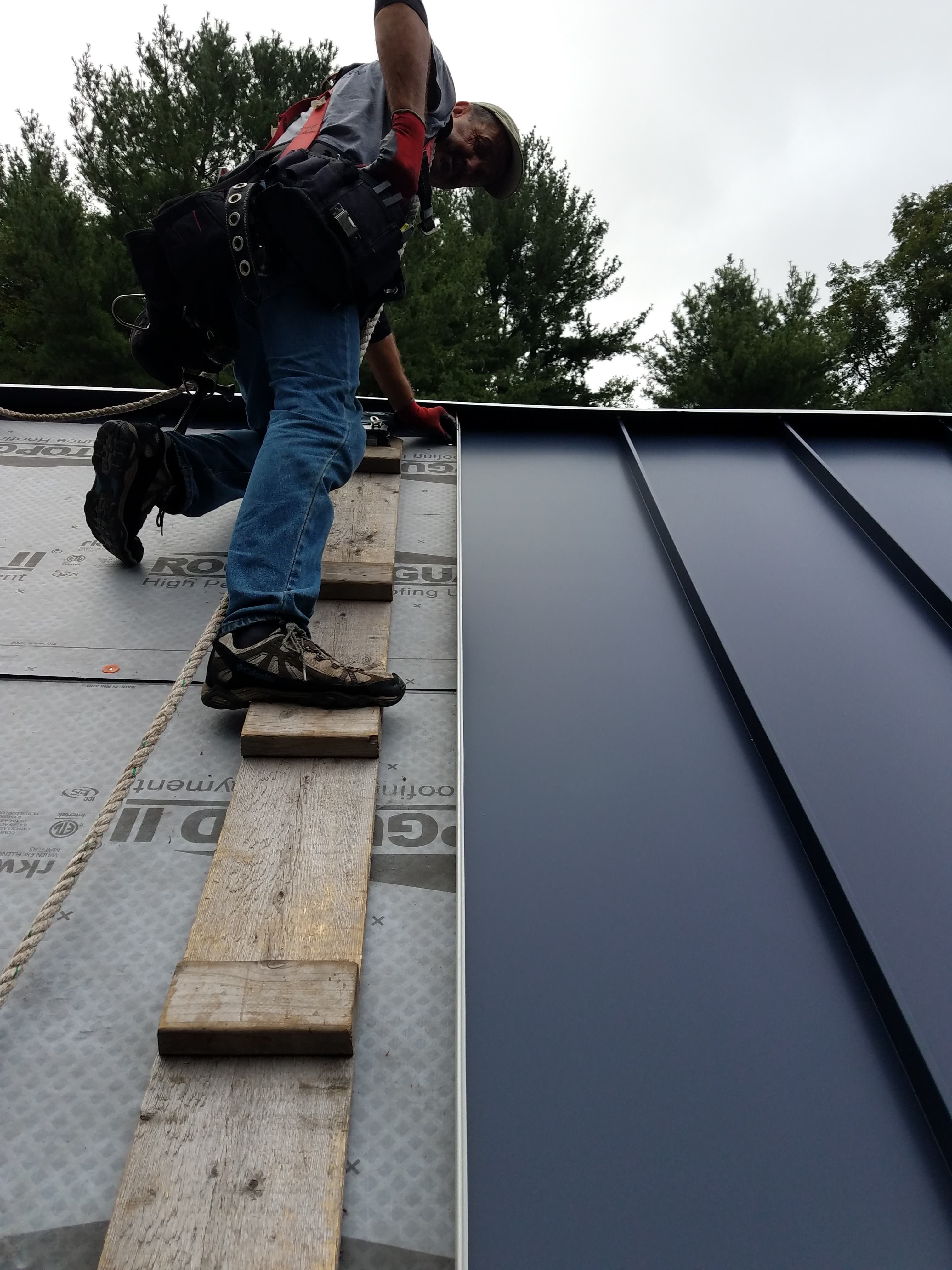
Treat every standing seam installation like a meticulously planned flight. Before your crew sets foot on the metal expanse, ensure a smooth "landing" with these crucial pre-installation precautions:
Charting the Course: Conducting a Thorough Hazards Assessment
Think of a hazards assessment as a detailed weather report for your rooftop journey. Before workers ascend, conduct a comprehensive evaluation of the entire worksite. Look for potential fall risks like:
-
Unguarded roof edges and openings
-
Slippery surfaces due to weather or debris
-
Loose materials or tools that could become projectiles
-
Unstable roof structures or weak spots
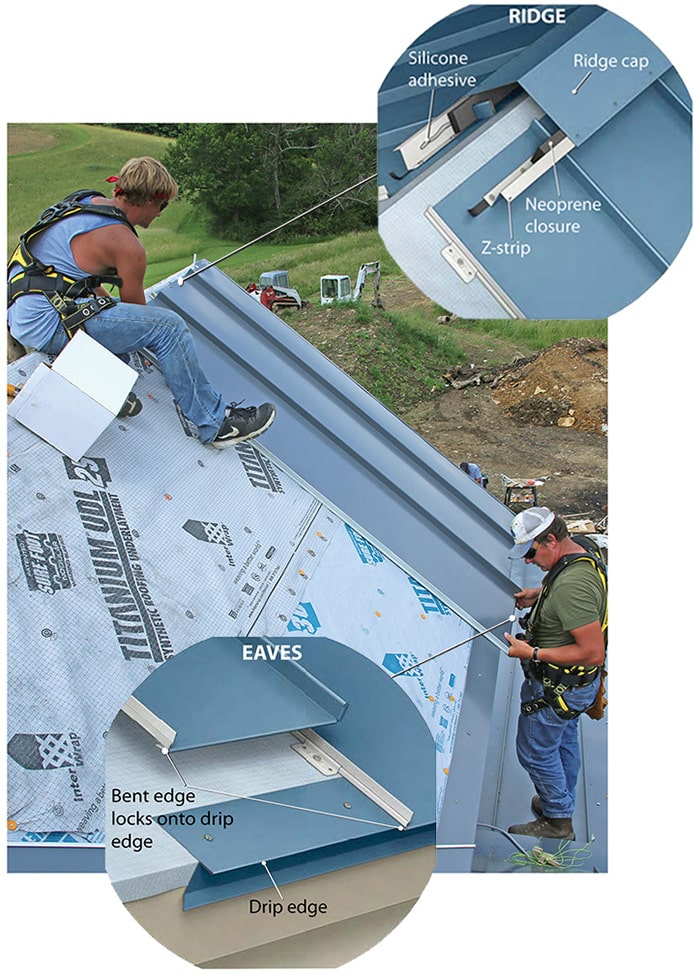
Don't just focus on the obvious; consider less apparent dangers like electrical hazards, extreme weather conditions, and even wildlife activity. Document your findings and create a plan to address each identified hazard. Remember, prevention is key.
Securing the Stage: Establishing a Safe Worksite
Once you've identified the potential dangers, it's time to transform the rooftop into a secure stage for your crew. Here's how:
Control access:
Restrict unauthorized personnel from the worksite and clearly mark designated entry and exit points.
Create clear walkways:
Establish designated pathways free of clutter and ensure they have adequate traction, especially in wet or icy conditions.
Post warning signs:
Make potential hazards clear with prominent signage, reminding workers of safety protocols and restricted areas.
Remember, clear communication and visual cues are essential for accident prevention. By actively creating a safe work environment, you demonstrate your commitment to your workers' well-being and set the stage for a successful project.
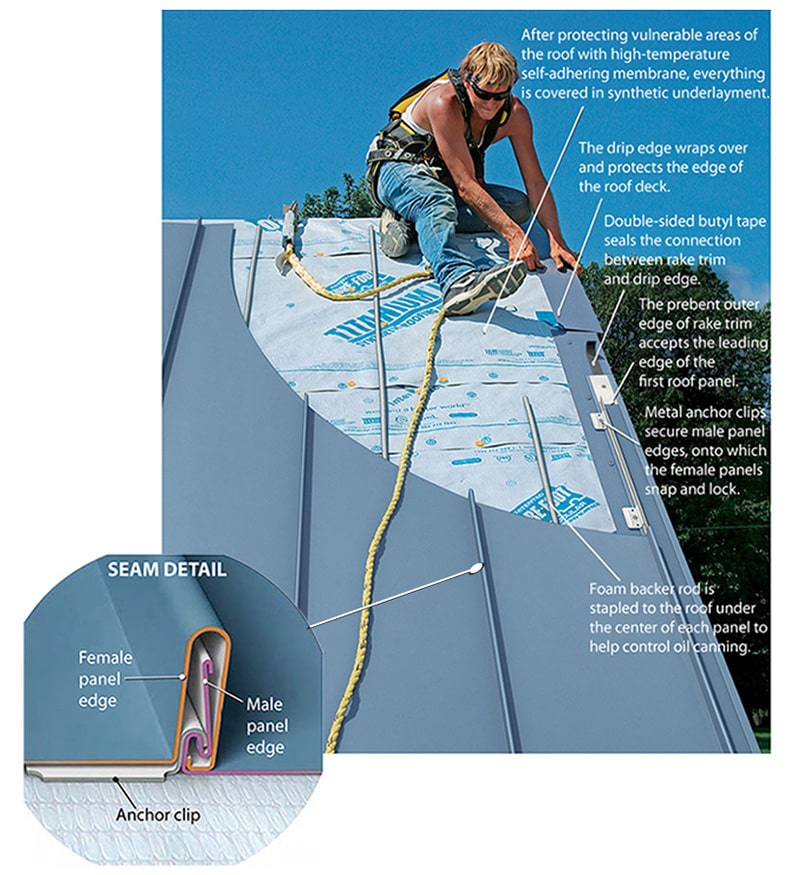
Tailoring Your Safety Net: Matching the System to Your Needs
Remember, a one-size-fits-all approach rarely works in safety. Consider these factors when choosing your system:
Roof Complexity:
Steeper pitches, multiple levels, or skylights might necessitate lifelines and anchorages for comprehensive protection.
Number of Workers:
Ensure enough systems for everyone, and consider systems allowing multiple connections for efficiency.
Task Specificity:
Tasks like panel cutting might require specialized lanyards for greater mobility within a designated work area.
Budget:
While cost shouldn't compromise safety, understanding budget constraints helps guide your decision-making.
Consulting the Experts:
Ensuring Compliance and Optimal Protection
Don't embark on this journey alone! Seek guidance from qualified safety professionals. They possess the expertise to:
Assess your specific needs and recommend the most suitable system.
Navigate complex regulations and ensure compliance with OSHA standards.
Provide valuable insights on compatibility, weight capacities, and installation best practices.
Remember, investing in expert advice can save you time, money, and most importantly, safeguard your workers' well-being.
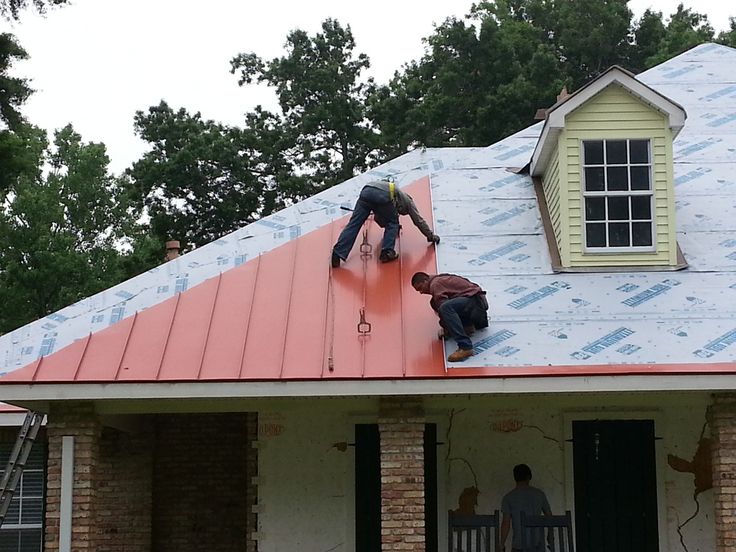
Beyond the Basics: Advanced Safety Tips for Conquering Rooftop Challenges
Mastering the fundamentals of fall protection is crucial, but for true rooftop mastery, delve into these advanced safety tips:
Permit Power:
Controlling Roof Access: Establish a permit system for accessing the roof. This not only regulates authorized personnel but also creates a documented record of who is on the roof and when.
Rescue Ready:
Equipping Your Team for Emergencies: Train your workers on proper fall rescue procedures and equip them with necessary rescue equipment. Remember, preparation is key to minimizing the impact of any unforeseen incident.
Vigilance is Key:
Conducting Regular Safety Audits and Inspections: Don't let safety become an afterthought. Schedule regular audits and inspections of your fall protection systems, equipment, and worksite conditions. Proactive identification and correction of potential hazards is vital.
Staying Ahead of the Curve:
Embracing the Latest Safety Regulations: The safety landscape is constantly evolving. Stay informed about the latest OSHA regulations and industry best practices, and actively implement them on your projects.
Remember, safety is not a destination; it's a continuous journey. By incorporating these advanced tips into your safety culture, you empower your team to conquer every rooftop challenge with confidence and pave the way for successful, incident-free projects.
For additional reading, OSHA offers a Fact Sheet entitled “Reducing Falls During Residential Construction: Installing Standing Seam Metal Roofs” that is free to study.
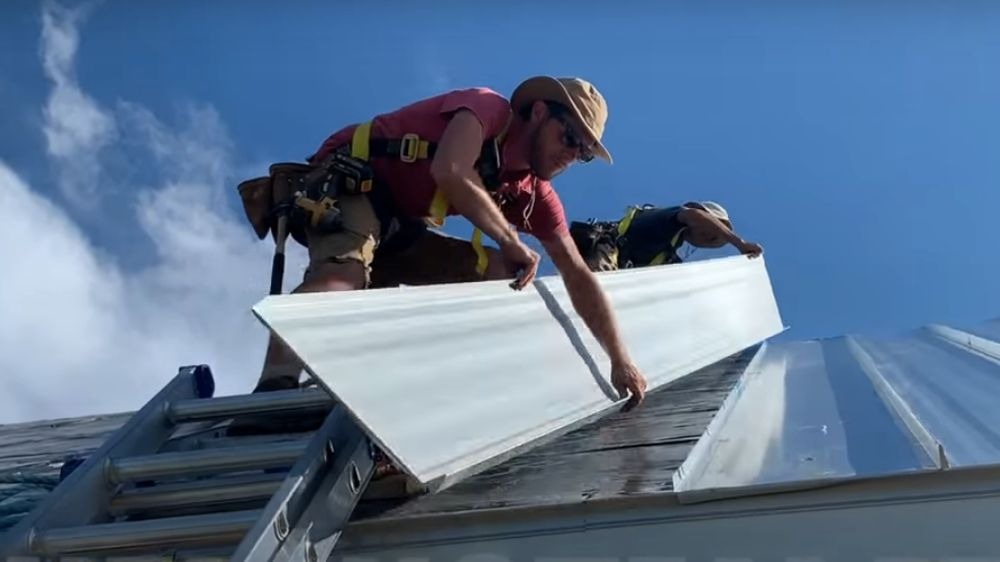
FAQs: Your Burning Questions on Standing Seam Installation Safety Answered
Q: Are there specific OSHA regulations for fall protection on standing seam roofs?
A: Yes! OSHA Standard 1926 Subpart M outlines regulations for roofers, including those working on standing seam roofs. It covers personal fall arrest systems (PFAS), guardrails, and safe work practices. Consulting a qualified safety professional ensures compliance and worker safety.
Q: Which fall protection system is best for standing seam roofs?
A: It depends! Consider roof complexity, number of workers, and tasks performed. Standing seam clamps offer mobility, while lifelines and anchorages provide continuous protection for complex roofs. Guardrails excel for perimeter protection. Talk to a safety professional to choose the system that best fits your needs and meets OSHA regulations.
Q: How often should I inspect and test fall protection equipment?
A: OSHA mandates inspecting PFAS systems before each use and annually by a qualified professional. More frequent inspections, especially after incidents or harsh conditions, are recommended. Regularly check lifelines, anchorages, and other components for integrity and functionality.
Q: What advanced safety tips can I use for standing seam roof installations?
A: Implement a permit system for roof access, train workers on fall rescue procedures, and conduct regular safety audits. Stay updated on safety regulations and best practices. Consider advanced measures like leading-edge systems for continuous protection or self-retracting lifelines for workers.
Q: How can I create a strong safety culture for my metal roof installation crew?
A: Open communication, ongoing safety training, and recognizing safe work practices are key. Encourage workers to report hazards and empower them to address them. Involve them in safety discussions and planning. Fostering a safety-first environment leads to a more engaged, productive team and minimizes accident risk.
Remember, prioritizing safety protects your workers and positions you as an industry leader, attracting clients and boosting your reputation.

